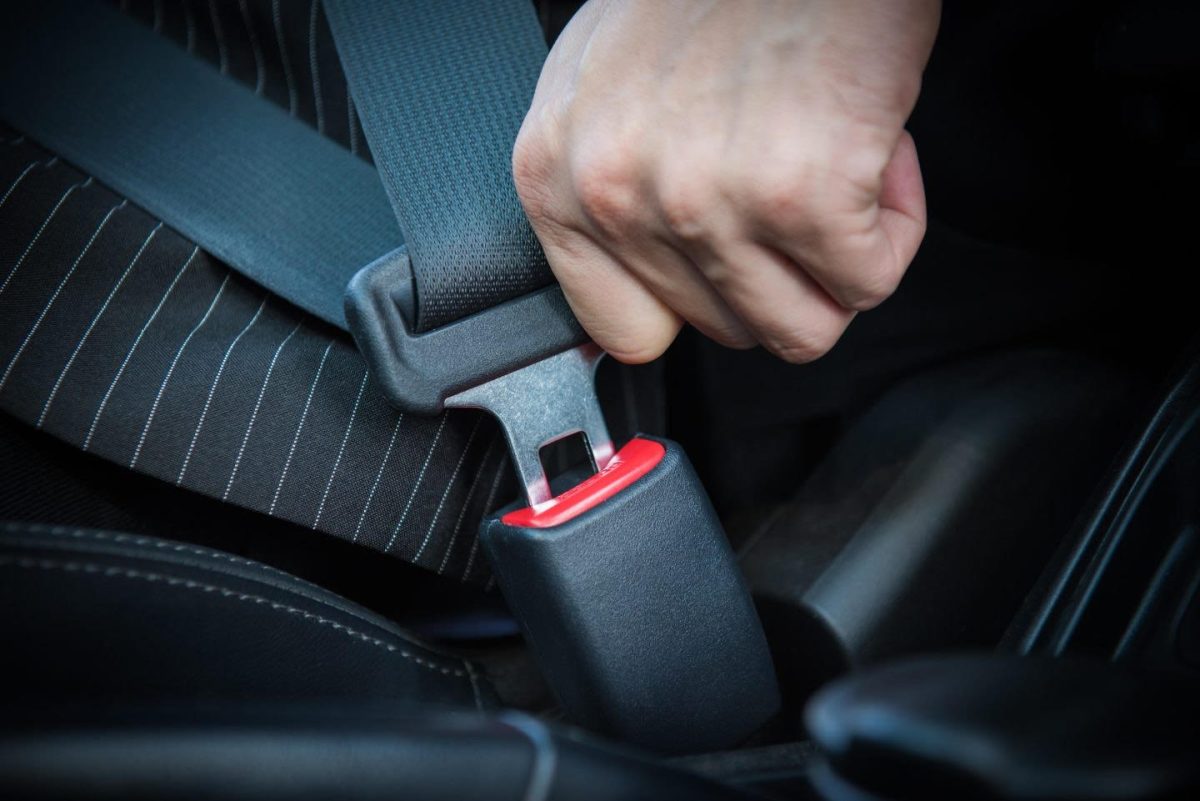Constant commercials, ads, billboards, PSAs, and remarks from others all circle around the topic of buckling up in the car. Yet, the idea of a single strap protecting someone in a car accident seems a bit far-fetched, so why so much pressure to put on a seatbelt? Are they even as safe as everyone is saying they are? How beneficial are seat belts?
George Cayley, an English aviator, is credited as the first person to invent a seat belt in the mid-19th century for his glider. The three-point seat belt, seat belts found in modern cars today, was invented by Swedish engineer Nilks Bohlin in 1959. Soon after, seat belts were in place in all vehicles.
The seat belt is laid across a person’s pelvis bone and stretches up from the right side of the pelvis bone to the left shoulder. The reason for this is due to the strong nature of the pelvis bone and rib cage, with the pelvis being the strongest bone in the body. These bones are able to resist more force than others in the body, and the distribution from the upper to lower half of a person’s body allows for the impact to scatter rather than hit one place on the human body.
The National Highway Traffic Safety Administration (NHTSA) focuses a lot of attention on seat belts, noting a very shocking statistic from 2022: “25,420 passenger vehicle occupants were killed. About 50% of those killed were not buckled (based on known seat belt use).”
NHTSA also makes a point to explain how seat belts are designed to keep you inside the car which eliminates the risk of ejection “which is almost always deadly”. The site lists that airbags are not enough to protect a life in a serious car crash, and can even result from further injuries if not buckled. Lastly, the improper use of a seat belt can lead to risk of broken bones and punctured organs.
The Center for Disease Control (CDC) also notes the legal side of not wearing a seat belt. Any officer can pull a vehicle over for not properly wearing a seatbelt and issue a ticket, with Tennessee’s seat belt tickets ranging from $25 on the first offense to $50 on the second.
Overall, seat belts are in place to decrease the risk of death in severe car crashes. While seat belts are not 100% effective and can cause injury or even death themselves, the benefits of wearing one outweighs the detriment of not. For now, the best thing we can do is wear a seat belt at all times, making it a habit to be the first thing people do when entering a vehicle, and reminding others of the importance of one.
CDC: https://www.cdc.gov/seat-belts/facts/index.html#cdc_facts_stats_impact-importance-of-seat-belt-use










